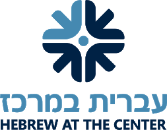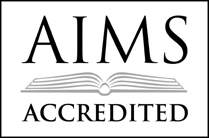Changemakers: Kindergarten Students Redesign South Campus Library
February 10, 2016 by
The grand re-opening of the South Campus Community Library occurred last week during the Kindergarten Bayit Patuach (Open House). With a flourish and a “one, two, three, cut!” every Kindergarten child used scissors to snip a long ribbon stretched across the library. The ceremony culminated months of hard work by the three Kindergarten classes as they created a library that was organized, accessible, and a place to enjoy books together. After the Bayit Patuach, one Kindergartener commented, “Now it is a real library. Before, it was just a place with books flopping around.”
At the Bayit Patuach, families were introduced to the result of months of research and work done by the children: a functional and systematic library that met the needs of the community. The books were sorted and alphabetized with colored stickers on each book in color-coded spaces designated for fiction, non-fiction, Hebrew, and other books. There was a new comfy reading space, an island to house special books, and a bookshelf in the fireplace for student-made books, as well as a new book return system and a book hospital for damaged books. Shelves were set aside for new library categories including the archives of JPDS-NC. Hand-crafted toys of different Kevin Henkes characters lined the shelves, based on sketches that were collaboratively drawn. Parents tried out the new chairs, heard books written by the children and destined for the fireplace bookcase. They also saw a brand new, child-created medal, the Community Favorite Award, that adorned new books on the island. The Community Favorite Award was given to books listed as childhood favorites by grandparents and community members who visited with us on Share the Nachas Day. These special books link an earlier generation to the current one and are a fitting addition to the South Campus Community Library, which will continue to inspire and educate children for many years to come.
The idea for redesigning the library emerged from a study about community that the Kindergarten students began earlier in the year. As they explored the South Campus community, a need was discovered for an updated South Campus Library. Although the library had plenty of books, they were not organized or stored in a way that worked for the community. The children said, “It is messy” and “You can never find the book you want.” They also noticed that many shelves were too tall for them and that it was impossible to reach the books that were up so high. Although there were plenty of ideas for accessing the books, such as “We could get the tall Mrs. Davis to get the books for us” and “We could climb on each other’s backs to get them,” the children realized that these weren’t sensible and long-lasting solutions and that they needed to think of a better plan.
In order to design a new library that worked for everyone, the students used the Design Thinking model. In Design Thinking, the students first Empathize as they learn about the audience for whom they are designing; then Define a point of view based on that audience’s needs; Ideate or brainstorm creative solutions; Prototype their ideas to show others; and finally Test their ideas and get feedback from the original audience.
First the students delved deeply into the library needs of different community members. We formed committees in each class who interviewed administrators, students, teachers, security personnel, guidance counselors, and librarians. As part of the process, a local journalist came to visit and taught skills involved in interviewing, like collecting information ahead of time, saving the hard questions for the end of the interview, and being sure to listen carefully.
We studied how libraries work and the students visited a variety of local libraries. The Library of Congress’s Children’s Reading Room provided a wonderful example of a library space well suited to the needs of its community, with comfortable pillows and chairs to snuggle into while reading, well-defined spaces for storing books, and a return system for books. At the Noyes Library for Young Children in Kensington, MD and the Mount Pleasant Library in Washington, DC, the children saw that fiction books were alphabetized by author and non-fiction books were grouped by categories – the same as at another local library, the Rabin Library at the North Campus. Seeing this organizational system in place everywhere stayed with the children and was an important part of the redesign plan. The children also saw that many local libraries contained artwork and special toys that reflected a love of reading and favorite characters in books.
Besides artwork and organization, the children also had ideas regarding the physical layout of the library, including keeping the books on lower shelves, having a comfy area to read in, an island to house special books, and a bookcase for student-made books and book character dress up items, which could be placed in the fireplace. Each class took on one of these components to work on: Gan Tmarim worked on the comfy area, Gan Rimonim made the island, and Gan Anavim constructed the fireplace bookcase. First the children made individual prototypes out of cardboard, cardstock, or recycled materials; then each class collaborated to make one large prototype for their final piece. With help from a master carpenter, Robert Davis, the children built the island and bookcase out of wood and learned how to use a rubber mallet to pound in pegs, attach boards with screws and screwdrivers, and to measure, measure, measure! With decorations and colorful paint determined through class votes, the pieces were beautiful, useful, and ready for the new library. Meanwhile, the comfy area’s additions included chairs inspired by ball pits, a wooden cube with holes in the side for a cozy reading space, and sewn blankets and pillows for reading and relaxing. With new rugs to define the comfy area, the library took on a new look and began to meet the needs of the community.
While the South Campus gained a new library, the children themselves gained a wide variety of skills through Design Thinking, researching, interviewing, sketching, measuring, engineering, and collaborating with peers. Not only did they redesign the library, but they came to see themselves as capable members of a larger community. Through their active involvement in the many facets of the project, the children discovered that their work would not only benefit themselves but the community as a whole.






